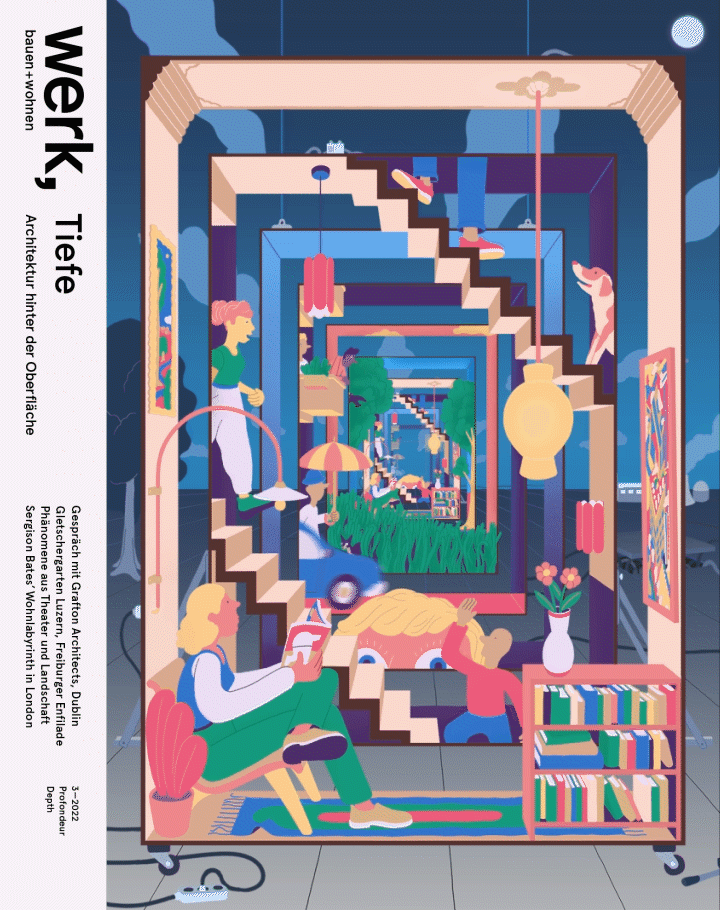werk, bauen + wohnen 3 – 2022

Immersing
While working on this issue we noticed one thing in particular: visually dense spaces — whether from the Baroque era or the fin de siècle but also those by Frank Lloyd Wright — create worlds, each of which is in a taut relationship with a time of great change or even crisis. A deep architecture can therefore be a medium that metaphorizes a current lack of clarity.
The important thing is not to confuse depth with complexity: here the phenomenon, there the cause. A look at the world of virtual comput er games makes the difference clear. On the programming level such games are extremely complex — but on the level of perception a player always only experience one room after the other, experience after experience. The degree of depth of a particular game system is measured by the potential density of action or experience, i.e., by things and game worlds that are layered one behind the other — and by the pleasure of accessing them. Playing has to do with immersing and becoming engrossed — and these are qualities that could also apply to the design and use of architecture. To put it more casually: a space that can only be recognised with more than just a single glance creates an incentive for physical play, movement, discovery, and an approach to the building. And, not least importantly, an incentive to iden tify physically with the architecture.
In this issue various aspects of “depth” are discussed, both physical and figurative: we look at architectural space as a stage, the depth of commitment, and make an excursion into history and geology. In his essay Steffen Hägele suggests that, alongside all the phenomenology, “depth” also has to do with profundity, with research and being informed — and with the admission that not every kind of depth can be fathomed with architecture. The two examples of conversions presented are bespoke one-offs in the upmarket sector and cannot be so easily applied to the situation in rental housing construction. Or perhaps they can? If finite resources finally demand their rights in building, and architecture once again consists more of things that incorporate their own history – then standard housing architecture in general could become deeper and, above all, richer. — Tibor Joanelly, Jenny Keller